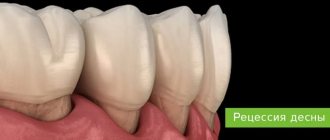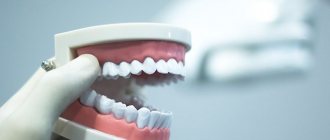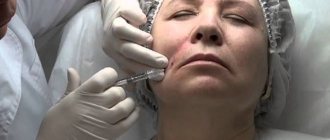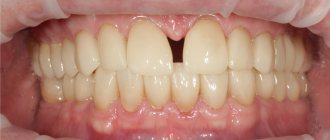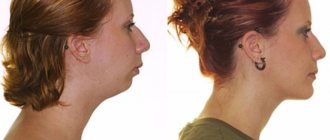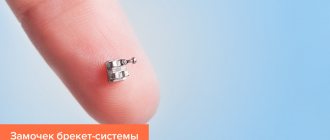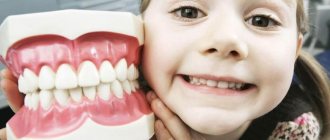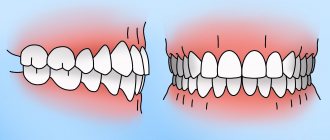Reasons why facial asymmetry occurs
Look in the mirror, and suddenly you discover that the right and left sides of your face seem to be similar to each other, but the other is not. Either one eyebrow does not correspond to the other, or the eyes are somehow different: one is larger, the other is smaller. What are the causes of facial asymmetry?
- The root cause is the mystery of birth. This is accompanied by incorrect construction of the skull bones.
- The joint responsible for connecting the lower jaw and temple develops with disruption.
- Muscle and connective tissue interact weakly with each other.
- The lower jaw develops slowly.
Past injuries, illnesses, insufficient oral and dental care are already acquired problems. There are quite a lot of them.
- One of them can lead to torticollis if the child lies on one side for a long time.
- Vision problems that are accompanied by strabismus.
- Infections and inflammations that cause pinching or damage to the facial nerve.
- The bones of the face did not heal properly after a fracture of the bridge of the nose.
- Missing teeth or malocclusion, as well as the bad habit of squinting one eye, are not all the reasons for facial asymmetry.
Often severe facial asymmetry occurs after a stroke. Muscle paralysis occurs.
Symptoms
There are two types of facial asymmetry. The first of them is natural. At the same time, the difference between the right and left sides of the face, say, is almost invisible. And this is natural. If you look closely at your mirror image, you can find a slight difference in the location of, say, eyebrows or eyes.
The left half of the face contains feminine, soft features, while the right half contains sharper and more masculine features. The difference in proportion, as experts say, should be no more than two to three millimeters. In the second, pathological form, the asymmetry of the round face is clearly visible. Due to the weakening of facial muscles, the cheek sags, the corner of the mouth and eyelid droop.
Since some muscles have lost the ability to move, the affected part looks like a mask:
- The size of the eye increases.
- Facial expressions are poor.
- Possible speech impairment.
- There are even painful sensations.
If problems appear with the neck muscles, the head tilts to the side. Asymmetry can be either left-sided or right-sided. If it is not so noticeable, then it does not require additional treatment and medical intervention.
A meeting with a neurologist, dentist, ophthalmologist, or neurosurgeon is needed to resolve the issue: how to correct facial asymmetry. To continue serious treatment, doctors suggest undergoing an X-ray of the skull, magnetic resonance imaging, computed tomography, and possibly a neurological examination.
To improve muscle tone, people suffering from facial asymmetry are encouraged to do stimulating gymnastics. In such cases, massage helps a lot. A good hairstyle and makeup will help a woman hide it. And men can be decorated with a beard and mustache.
Facial asymmetry in adults - how to treat
Treatment depends on the causes of the disease and the severity of the changes. When a diagnosis of facial asymmetry is made, one or more doctors decide how to correct the anomaly. For mild asymmetry, conservative correction methods are sufficient:
- An asymmetrical bite is corrected using splinting, braces and other orthodontic aids.
- When muscles are damaged, drug therapy, physiotherapy, and massage are used. With reduced muscle tone, myostimulation and gymnastics are necessary. Massage relaxes/tones muscles, eliminates pain.
- For neuritis of the facial nerve, treatment is carried out in a hospital. The doctor prescribes medication and physiotherapeutic treatment.
Surgery is required when the structure and function of the jaw joint changes.
Craniosacral manual therapy and massage help correct the asymmetrical skull in children and alleviate the condition of adult patients. In case of significant defects in the articular bones, the neurosurgeon prescribes prosthetic surgery.
At the Clinic of Manual Medicine “Galia Ignatieva MD”, correction of soft tissue lesions is performed using cosmetic minimally invasive methods:
- Botox injections;
- thread lifting;
- hardware massage;
- lipofilling;
- injection of fillers.
Rice. 4. The result of conservative treatment - before and after.
If the asymmetry is severe and does not respond to conservative treatment methods, then a surgical solution to the problem is indicated. It could be plastic surgery.
If there is an abnormal development of the joint of the jaw bones, maxillofacial surgery is prescribed. The neurosurgeon performs surgical treatment of complications of innervation and pathology of the facial nerve.
Facial asymmetry, the treatment of which may require a whole range of measures, is difficult to eliminate if the patient consults a doctor late. Early diagnosis, the professionalism of the doctors at the Manual Medicine Clinic “Galia Ignatieva MD” and compliance with their recommendations in half the cases lead to an improvement in the condition.
Correction of facial asymmetry
If flaws in the form of asymmetry suddenly appear in your face, this is not yet a reason to radically change your appearance. You can just use cosmetics and place the accents correctly. In this case, you need to use foundation and correctors. They can be oily or dry. In addition, she uses highlighter in her work. It is needed to visually hide wrinkles or highlight the necessary part.
The asymmetry of the eyes will not be so noticeable if they are not outlined with bright eyeliner. It is better to have tones close in color on hand, to make a soft transition from one color to another. Pencils with a contrasting color will also come in handy. On the inside of the eye, which we want to visually enlarge, it would be good to apply a lighter tone. On the eyelid of the second eye we apply an almost invisible line of dark color.
If the eyes, in your opinion, are still asymmetrical, then you need to place emphasis on the eyelashes and eyebrows. Eyebrows need to be given the perfect shape and arch. Latisse can enhance your eyelashes. A brown pencil can always highlight light eyebrows. And if you pluck an eyebrow that is higher than the other and draw on the eyebrow line with a pencil, your face will take on a completely different expression.
You need to have foundation creams on hand to be able to visually change the shape of your nose. The golden rule: a dark tone is applied to those places that need to be hidden or visually reduced. A lighter tone is used to highlight certain parts of the nose. To make the nose look good, you need to draw a line along the nose in a tone that is darker than natural. And leave a light light highlight on the wings of the nose and its tip.
A contour pencil helps give the lips the desired shape. And then the lips visually lose their asymmetry. You can correct your cheekbones with regular blush. To do this, you need two half-tone blushes that are close in color. They are applied along the cheekbone line, and their heights are different.
Gymnastics for facial asymmetry
All people's faces are asymmetrical, it's no secret. With the help of exercises, you can partially smooth out facial asymmetry. Asymmetry is visible in the lines of the eyebrows, the level of the cheekbones and nostrils, as well as in the position of the corners of the mouth. These signs show which side is higher and which is lower. This is especially well captured in document photographs.
This is where you can see all the advantages and disadvantages of the face. One side is higher and the other is lower. If a person is right-handed, then, as a rule, the left side of the face will be higher. And if you are left-handed, then the right side of your face will be higher.
Reasons why one cheek is larger than the other
In fact, every person has a difference between one half of the face and the other; they are different, but in some it is less noticeable and in others the defect is very pronounced. Appearance plays a big role in our world. This is how they “meet” a person. In the requirement column for many positions there is a “good appearance” item. Therefore, every person cares about how he looks. Sometimes, when looking at yourself in the mirror, you may notice that one cheek is larger than the other. What is this, a disease or this body structure? – this is the question asked by those who saw such a flaw. Today we will dispel all your doubts and conduct a short master class on restoring asymmetry.
Reasons why one half of the face is larger than the other
Many people complain that one side of their face is different from the other. This becomes noticeable when carefully examining yourself in the mirror or in unsuccessful photographs. Some, noticing that their cheeks are different, begin to “sound the alarm” fearing that they are sick.
Variations in the structure of a person’s face that exceed the natural differences in the right and left halves in significant quantities are considered deformities
In fact, slight asymmetry is present in absolutely every person. This is what makes our face alive, unique and inimitable.
To make sure that each person is not symmetrical, you can take several photos of your friends and cut them into two equal parts along the line of the nose in a photo editor. Now one of the right halves is “mirrored” and connected to the other, and we do the same with the left parts. Take such photographs of several people, and you will see that the faces of the right and left halves of the same person are very different.
However, different halves of the face are not always the norm. Let's look at what factors can lead to pathological changes.
Reasons why one side of the face looks very different from the other:
- Improper development of bones and joints, as well as connective or muscle tissue. Such problems can be more or less pronounced, they can only be corrected with proper makeup or plastic surgery.
- Inflammation of the cheek can also lead to its enlargement. After eliminating the problem, the face acquires normal contours.
- Severe strabismus can also develop facial asymmetry. The same applies to torticollis.
- Facial muscles can become severely distorted when nerves become pinched or die. This problem often occurs with strokes and heart attacks.
- An incorrect bite or missing teeth on one side can lead to facial asymmetry. Flux can also cause a similar problem.
- A fracture of the facial bones that did not heal properly.
- The habit of chewing, sleeping or squinting to one side is the most common cause of facial asymmetry.
There are many reasons. Some of them can be avoided by taking timely treatment and controlling your facial expressions.
Provoking factors in adults
The cause of the anomaly in adults is acute and chronic diseases of the dentofacial apparatus and its injuries:
- Congenital pathologies of the dentofacial apparatus that were not corrected in childhood.
- Arthrosis of the TMJ (dystrophic destructive changes in the joints). They manifest themselves as a displacement of the LF towards the diseased joint, stiffness in the morning, and pain.
- TMJ ankylosis (joint immobility due to cartilage degeneration). The anomaly is noticeable at rest and increases when the mouth is opened, which in case of severe pathology does not exceed 1 cm.
The line drawn between the lower central incisors shifts towards the damaged joint. Movement of the jaw in the horizontal direction becomes impossible. - Contracture (restriction of movement) of the LF muscles. The midline is shifted towards the affected muscle.
- Odontogenic benign tumors (odontoma, ameloblastoma, steoma, osteoblastoclastoma). The jaw bones are destroyed by neoplasms, deformation occurs, which usually becomes the first manifestation of the disease.
- Malignant tumors of the upper and lower jaw (sarcomas, carcinomas). The resulting deformation is caused by tumor growth.
- Jaw defects (reduction in the volume of dental tissue) due to osteomyelitis, syphilis, tuberculosis, surgical interventions for oncological diseases. Bone deficiency causes receding of the cheeks and disruption of the oval in the lower jaw area. As the mouth opens, the asymmetry increases.
- Micrognathia – due to underdevelopment of the jaw or damage. Micrognathia HF manifests itself as a reverse overlap, LF - with a slanted chin.
- Diseases of the salivary glands.
- Periostitis. Asymmetry is caused by swelling and/or abscess under the periosteum.
- Periapical (at the root of the tooth) and periaxillary abscess. Facial deformation is caused by swelling that has spread to adjacent tissues. The pathology manifests itself as throbbing pain.
- Crossbite (transversal displacement of the jaws relative to each other). The chin appears to the side, the lip sinks on one side.
- Facial injuries, fracture of the lower or upper jaw. Temporary asymmetry occurs due to soft tissue swelling and/or displacement of the jaw bones.
In addition to the above pathologies, the anomaly can be caused by many other diseases that are not related to the dentofacial apparatus:
- Damage to the brain and meninges (meningitis, encephalitis, stroke).
- Nerve diseases (Bogorad syndrome, facial nerve damage).
- Pathologies of the salivary glands (mucocele, purulent parotitis, adenoma).
- ENT diseases leading to unilateral deformation (sinus cyst, atelectasis (collapse of the paranasal sinus)).
Facial asymmetry can occur due to hydrogen peroxide poisoning, botulism, actinomycosis (infection with actinomycetes fungi).
Treatment methods for small lower jaws in children and adults.
In this publication, read how to expand the dentition with braces on one side.
Here https://orto-info.ru/zubocheliustnye-anomalii/chelyustey/ukorochenie.html we will consider the reasons for shortening the dentition and methods for its correction.
One side of the face is larger than the other: normal or pathological
If you notice that the sides of your face are different, first of all, you need to determine whether it is pathological or normal. To do this, you need to know the symptoms of the pathology.
If there is facial asymmetry, parchment skin may be present. This symptom is associated with a genetic disease.
Asymmetry, which is considered normal, should not be too obvious. If this is a normal facial structure, then the difference is noticeable only upon careful examination.
Symptoms of abnormal facial asymmetry:
- The affected side is swollen and the tissue may be hard;
- The corners of the mouth and cheek on the affected side are drooping and drooping;
- The affected half of the face loses mobility;
- The folds on the forehead and nose suddenly smooth out sharply;
- The eye on the affected side becomes narrower, or, conversely, larger;
- The eyes, nose and lips on the affected side lose mobility;
- There are speech disorders;
- The affected part is painful.
Even one of these signs suggests that asymmetry is the result of a serious problem. In this case, it needs to be treated.
Facial deformation and variants of its manifestation
Facial deformation (distortion, asymmetry of the eyes, eyebrows, cheekbones, nose) can occur in different directions, its specific types can guide the doctor in making a preliminary diagnosis and selecting the necessary examinations, then effective methods of correction, including surgical options for solving the problem, removing the causes medicines.
Facial distortion
Facial distortion most often occurs with peripheral damage to the facial nerve against the background of its inflammation. Such changes in appearance develop “suddenly and immediately”, so visits to the doctor are made urgently.
Diagnosis of damage to peripheral nerves should be carried out with the differentiation of stroke - with this pathology, a disruption of the functioning of the same nerve is observed, but according to the “central type”. You can determine what exactly caused the sudden distortion of the face yourself:
- during a stroke, a person can close his eyes tightly, while a peripheral lesion prevents this from happening (the eyelids do not close),
- if the victim is able to “pull” his eyebrows as tightly as possible, then we will be talking about an emergency cerebrovascular accident (stroke),
- sagging of the corners of the mouth and the inability to smile fully on the affected side are a characteristic sign for both pathologies.
If there is a suspicion of a stroke, the patient should be in bed, and an ambulance team should be called to the house. Any movements, especially walking or riding vehicles without special devices, are contraindicated for him - a full-fledged hemorrhage in the brain can occur, and complete paralysis can occur.
Eye asymmetry
Asymmetry of the eyes can manifest itself in strabismus, the location of one higher in relation to the other. Most often this problem occurs against the background of:
- disorders in the jaw area - incorrect structure of the lower part (or previous injuries), problematic bite, absence of several teeth,
- neurological diseases, damage to the facial nerves by inflammatory and infectious diseases.
During diagnosis, the ophthalmologist will definitely check the patient’s level of vision and measure the proportions of the entire face. Pathological deviations are considered to be the difference between the location of the palpebral fissures of 3 mm and 5 degrees.
Since eye asymmetry can appear against the background of rapid growth of a malignant tumor, a consultation with an oncologist will be required after the presence of a formation in the cranial cavities is detected.
In addition to visual examination, hardware methods are also used for diagnosis - in this case, magnetic resonance imaging of the face and x-ray of the skull will be informative.
One eyebrow is higher than the other: how to fix it
The situation where one eyebrow is higher than the other can be corrected through surgery, but here it is required extremely rarely, only in particularly advanced cases. Usually, doctors first carry out diagnostic measures, then prescribe a course of therapy (if any disease such as inflammation of the facial nerve has been identified) and only after that they recommend using the services of experienced cosmetologists and makeup artists.
In fact, such asymmetry is a normal phenomenon that is rarely associated with pathological processes. But one eyebrow can be located higher than the other due to inflammation of the facial nerves and congenital strabismus.
To read: Rules for caring for the skin around the eyes, taking into account the desired result
Often, the disproportionate location of the eyebrows indicates a person’s physiological habits - for example, when surprised or very excited, he raises one eyebrow, chews food only on one side of the jaw, constantly squints with a low level of vision.
Asymmetry in the cheekbones
Asymmetry in the cheekbones may appear due to:
- Missing teeth. The fact is that tooth loss leads to the resorption of bone partitions and the formation of a dent. As a result, the facial muscles become tense, which makes the face in adults disproportionate. If the lower jaw is missing several teeth, then the soft tissues of the face are displaced due to changes in the angle of the bones.
- The habit of chewing food on only one side of the jaw . The load on the muscles is distributed unevenly; toned (overstressed) muscles simply pull on one side of the face. Asymmetry in the cheekbones especially often appears in those people who love chewing gum.
- Night rest in a position on your stomach or side . The tissues adjacent to the pillow are constantly under strong pressure and very slowly begin to deform. One cheek becomes larger than the other, the oval of the face changes.
The problem may lie in the progression of neurological pathologies, inflammation of the facial nerves, injuries and fractures, and improperly performed plastic surgeries.
Nasal asymmetry
Asymmetry of the nose can manifest itself in the form of irregularly shaped nostrils or their different sizes, deviation of the tip of the organ from the midline. The reasons are:
- individual features of the anatomical structure of the nasal septum,
- problems in the intrauterine development of the skull bones - for example, the appearance of a “cleft lip” or “cleft palate” defect,
- unsuccessful rhinoplasty,
- mechanical injury.
Severe nasal asymmetry affects breathing, so in such cases doctors strongly recommend surgical intervention to improve the condition and functionality of the respiratory system.
One side of the jaw is larger than the other
Most often, one side of the jaw becomes larger than the other for mechanical reasons - missing teeth or bone injuries (displaced fractures). This type of asymmetry can also be caused by a tumor developing in the soft tissues of the chin or cheeks.
The disproportion of the lower part of the face entails a skew of its other parts - one cheekbone is visually located higher/lower than the other, one of the eye slits may be narrower, and so on.
Asymmetry of the lower jaw
Asymmetry of the lower jaw is its skew to one side, which can be obvious (visible to the naked eye) or hidden (visible only from below). The causes of the problem may be sleeping on one side of the face, incorrect posture, and the habit of chewing food in a “one-sided” order. Sometimes a crooked jaw indicates the development of a pathology such as partial paralysis, inflammation of the facial nerves, or tumor growth in the soft tissues.
The jaw can be corrected surgically if the cause of the problem is mechanical damage to the bones. In some cases, it is enough to treat the pathology (tumor removal, anti-inflammatory therapy, dental prosthetics) and resort to cosmetic procedures to straighten the facial contour.
Watch this video about the causes and treatment of facial asymmetry:
Asymmetrical smile
An asymmetrical smile is a sign of a neurological disease. Most often, doctors use it to diagnose inflammation of the facial nerves, but be sure to rule out a stroke. The solution to the problem is to carry out full treatment of the underlying disease, correction of soft tissues with fillers and Botox injections.
The latter applies only if the incorrect smile arose more than 6 months ago, and the person simply did not seek qualified medical help about this.
Lip asymmetry
The causes of lip asymmetry are:
- features of the anatomical development of this part of the face,
- trauma to the upper or lower jaw,
- myasthenic syndrome,
- cerebrovascular accidents,
- inflammatory processes in the nerves,
- neuropathies of various origins.
The choice of treatment method depends on the cause of the defect, but surgical intervention is only appropriate if there is a history of jaw trauma, after which the bones were not fused correctly. The most commonly used cosmetic procedures are:
To read: Queen of Burlesque Dita von Teese: plasticity that emphasized the sophistication of the dancer
- injection of hyaluronic acid into the upper or lower lip,
- using threads to correct nasolabial folds,
- manual therapy,
- botulinum therapy.
How to align different halves of the face
If you have identified the fact that the face has significant differences on both sides due to some kind of disease, then to determine the cause, you need to visit a doctor. The specialist will prescribe tests for you, perform an examination and advise the correct treatment.
With good reason we can say that there is not a single person with absolute symmetry of the right and left halves
Asymmetry can occur as a result of drug use. In this case, the face often becomes gray.
To determine the cause of pathological facial asymmetry, you need to visit a doctor. In fact, you may need a number of specialists, but it is best to visit your doctor first.
In this case, you will not waste a lot of time visiting unnecessary medical professionals. The specialist will make a list of doctors you need to visit.
Possible complications
The consequences depend entirely on the underlying cause of the anomaly and the timeliness of contacting a doctor. In some cases, the problem can be eliminated without a trace with a quick cosmetic procedure or a light bite correction.
In others, if the problem is ignored for a long time, it can result in significant destruction of the temporomandibular joint, with no guaranteed hope for a complete restoration of its function.
Thirdly, create a serious threat to life itself (in case of malignant tumors).
Only a doctor can give an accurate answer to the question about the consequences of pathology after a thorough examination. In any case, the only correct action for the patient will be to consult a doctor as quickly as possible when a pathology is first detected.
Gymnastics to restore symmetry or how facial muscles work
Facial muscles are constantly working. However, if this occurs unevenly, asymmetry may occur. This problem also often appears with age. If this is not associated with the presence of serious diseases, then the problem can be eliminated with the help of gymnastics.
Exercises to eliminate facial asymmetry:
- The palms hold the muscles and skin of the forehead, while the eyebrows rise as much as possible up and down;
- We open our eyes as wide as possible and hold this for three counts, relaxing our eyes;
- We inflate our cheeks as much as possible, count to three and retract them, again counting to three;
- We inflate and deflate the cheeks one by one;
- Smile from the top of your mouth without showing your teeth, and then form your lips into a tube;
- We move the jaw forward, left and right.
We perform each exercise ten times. If done regularly, exercise will give the first results within a month.
At what age is it better to carry out correction?
At what age can you start correcting your bite in children?
It is impossible to determine malocclusion in a 1-year-old child. It is possible to suspect it if your parents have it. Malocclusion in a child from 2 years to 3 years of age can be corrected only with the help of preventive measures.
These include:
- breastfeeding up to one year;
- timely introduction of hard foods into the diet;
- use of orthodontic pacifiers;
- monitor the baby’s posture during sleep;
- promptly treat caries of primary teeth;
- if they are lost early, prosthetics are necessary.
The baby needs to be treated for somatic diseases that can disrupt the development of the dental system.
At what age is the bite corrected in children? Active correction begins in the age range from 3 to 5 years.
The following activities are carried out:
- stopping bad habits;
- use of vestibular shields;
- facial myogymnastics;
- In case of early tooth loss, prosthetics are performed.
At the age of five, plastic surgery of the short frenulum of the tongue and lips is performed.
At the age of 7 years and older until adolescence, correction is carried out with various devices for removable correction.
These include:
- orthodontic plate devices;
- trainers;
- mouth guards;
- extraoral devices.
Starting from adolescence of 12–13 years, the defect is corrected using various models of brace systems.
In adolescents over the age of 16, veneers and crowns are used to correct minor cosmetic defects in the smile area.
How to correct a child’s bite and what correction methods to use is decided only by the orthodontist.
Correction of facial asymmetry
A certain percentage of people turn to cosmetologists or plastic surgeons specifically about the asymmetrical arrangement of facial elements. However, most often the disproportion of the latter is determined by a cosmetologist during an examination regarding the correction of any other defects or by a plastic surgeon who is planning, for example, a volumetric plastic surgery.
The shape and symmetry of all points depends on the structure of the bones and cartilages of the facial skull, the degree of development, volume and tone of the facial and masticatory muscles, passing nerves and blood vessels, the volume and thickness of subcutaneous fatty tissue, etc.
Of the many formations of the facial skull, including osteochondral structures, the most important cosmetic and aesthetic formation is the nose. Its shapes and sizes not only determine aesthetics, but are also the main ones in cases of asymmetry formation. The latter, if you look closely, can be expressed in unevenness or differences in the contours of the eyebrows, in different shapes of the corners of the mouth and the depth of the nasolabial folds, in different sizes and shapes of the ears, the position of the wings of the nose, etc.
Facial asymmetry is primarily, from a neurological point of view, determined by the lack of symmetry in the hemispheres of the brain. Each of the cerebral hemispheres regulates sensations (sensory) and motor functions of the corresponding halves of the body in different ways. At the same time, one person’s perception of another’s facial expressions also depends on the state of interaction between the hemispheres of the brain in a particular person.
Static or morphological type
This type of symmetry violation is characterized by the presence of differences in the state of rest between individual elements in size, structure, shape and proportions. The reasons for these differences lie in individual developmental characteristics, pathology of the bones of the facial skull, pathology of the masticatory and facial muscles, and the consequences of diseases and traumatic injuries.
Types of asymmetry A Static or morphological B Dynamic or functional
Dynamic or functional type
Consists in asynchronous contractions of the facial muscles and manifests itself during facial expressions. For example, a disproportion that is absent at rest or a moderate disproportion at rest, respectively, appears or significantly increases when smiling or stretching out the lips in the form of a tube. The dynamic form of asymmetry is associated with congenital or acquired pathology of facial muscles, residual effects of damage to the central facial nerve (cerebrovascular accident) or peripheral in the form of Bell's palsy. In this case, the severity of the imbalances depends on the degree of damage (neuropathy) of the facial nerve.
Therapy for the pathology in question is based on diagnosing the cause, establishing the type and degree of the pathological condition and prescribing treatment for the corresponding pathology in combination with the use of neurotrophic methods.
Since the most common cause is facial neuropathy, the main principles of treatment are:
- Use of appropriate specific (neurological) traditional drug therapy.
- Injections of botulinum toxin preparations on the “healthy” and/or affected side.
- The use of stabilized hyaluronic acid fillers.
- Carrying out surgical correction or thread lifting.
In addition, in almost all cases, gymnastics against facial asymmetry and electrical stimulation procedures can be used (in the absence of contraindications to their implementation).
In order to carry out botulinum therapy, briefly described above, various preparations of botulinum toxin “A” can be used, in particular “Botox”, “Dysport” and, especially, “Lantox”. In case of paralysis and paresis, correction with these means is carried out on the healthy (conditionally) half of the face, since it is here that increased muscle tone is formed.
Surgical treatment of facial asymmetry
Dermal gels
At the next stage (after botulinum therapy), contouring and correction of soft tissue volumes are carried out using hyaluronic acid fillers. These drugs, as part of complex therapy (surgical treatment and botulinum therapy), make it possible to achieve high functional and aesthetic results in patients with long-term and severe forms of paralysis of the facial muscles.
Preparations of stabilized hyaluronic acid can not only eliminate the disproportion of areas and restore the aesthetic condition, but also have a pronounced therapeutic effect due to the improvement of microcirculation and trophic processes in tissues.
Experts in neurology consider plastic, hypoallergenic, devoid of cellular and gene toxicity, new-generation hyaluronic acid-based fillers with a special three-dimensional structure from the “Bellcontour” line of the Swiss pharmaceutical concern “Hyal Intertrade SA” to be optimal. Contour plastic surgery is carried out using classical filler injection techniques - linear, fan, multipuncture, “mesh”.
Neuropathy of the facial nerve on the right A initial state B picture after botulinum therapy (Lantox) and injection plastic surgery (Bellcontour) C state before D after volumetric correction
Surgical treatment and thread lifting
In cases where the asymmetry is characterized by significant severity (more than 5 cm in total), surgical correction is required, since conservative treatment methods are not able to provide satisfactory results not only functionally, but also aesthetically.
Face lift
Let's look at several options for procedures for correcting the lower third of the face and eliminating asymmetry.
Lipolitics
The procedure for modeling the face using lipolytics is called injection lipolysis. Lipolitics are preparations based on natural ingredients, their main action is aimed at the breakdown of subcutaneous fat cells, resulting in a rejuvenating effect.
The effect of the procedure with lipolytics occurs quite quickly, the oval of the face changes, and the subcutaneous tissue structure is aligned. The procedure does not allow the splitting of an extensive layer of fat.
In what cases are lipolytics used?
- if you need to eliminate a double chin,
- form a natural oval face,
- reduce the volume of the cheeks,
- eliminate defects in the shape of the nose,
- correct nasolabial folds
Cost per 1 ml
procedures vary
from 3 thousand rubles
and more, depending on the drug, the number of milliliters administered and the number of correction zones. For a pronounced effect, you need at least six to eight procedures for each zone, which involves serious expenses, reaching 200 thousand rubles and even higher.
The lifting effect is temporary. After some time, the procedure is usually repeated.
Mesotherapy
Mesotherapy consists of therapeutic injections of individually selected cocktails, which are injected into the middle layer of the skin with a very thin needle.
After the mesotherapy procedure:
- complexion improves,
- muscle tone increases,
- you can eliminate “creases” in the skin,
- you can remove nasolabial folds and drooping corners of the lips,
- You can remove your double chin.
The number of rejuvenating procedures during mesotherapy depends on the age and problems that need to be eliminated. Mesotherapy has a cumulative effect, the results of the procedures can be seen in 2-4 weeks. On average, 5 to 7 procedures are required with an interval of 1 time per week; if necessary, the cosmetologist can increase the number of mesotherapy procedures. The cost of the procedure varies from 4000 - 5000 rubles
and higher in one procedure.
Mesotherapy effect
- temporary. To maintain the effect, the procedure must be repeated once every 6-12 months.
Biorevitalization - 3D face lifting with hyaluronic acid
The biorevitalization procedure is currently the most popular. We all know well, according to doctors, that the main property of hyaluronic acid is to retain moisture, maintaining the natural hydrobalance of the skin.
Biorevitalization is carried out in all areas where there are problems - on the face, neck, décolleté, and is also used in other areas of the body, providing the necessary hydro reserve to the skin layers. Injection biorevitalization is comparable in effect to a surgical facelift; the procedure can completely sculpt the face.
Using hyaluronic acid injections, you can correct the lower third of the face:
- remove pronounced nasolabial folds,
- remove flaws, if any, on the chin, that is, change its shape,
- and also adjust the profile along the lower jaw.
Cost of biorevitalization.
The cost of injections depends on the drug used, its density and the number of milliliters required for the procedure. For example, for visual correction of malocclusion (the area under the chin), you may need up to 4 ml of the drug, the cost of 1 ml is from 18-20 thousand rubles. The general course can range from 1 to 5 procedures at intervals.
The effect of biorevitalization
- temporary. After the procedure, there is an immediate, pronounced visual effect that lasts from 5 to 12-15 months; to maintain the effect, the procedure must be repeated.
Kogi threads
Cog mesothreads provide a clear oval face and a pronounced lifting effect. Installed mesothreads contribute to the formation of dense connective tissue, and also help to activate the production of collagen and elastin, which are responsible for skin elasticity.
Kogi threads have notches, thanks to which it is possible to achieve:
- pronounced lifting effect,
- clear contour, tightening of soft tissues and prolonged action of thread lifting,
- They perfectly hold the given shape of problem areas of the face or body.
You may need 4-6 threads for the whole face, the average price is from 5 - 15 thousand rubles for 1 thread.
Effect of the procedure
- longer lasting, but also temporary. Kogi threads have a prolonged effect, the result of the procedure lasts from 2 to 4 years, to maintain the effect the procedure must be repeated.
Dental problems
Dentists never tire of repeating that the loss of a tooth, and especially several, is also a serious aesthetic problem. The connection between a full set of teeth and a beautiful oval face is the most direct. After tooth extraction, the bone partitions from which the tooth socket was formed gradually dissolve, and a dent forms on the jaw. At the same time, the jaw is deformed, slightly decreasing in height and diameter. This leads to tension in small facial muscles and the formation of new wrinkles or the deepening of old ones. If several teeth are missing in the lower jaw, the angle of its location may change, and the soft tissues of the face may shift, forming wrinkles and creases. Timely prosthetics will help avoid jaw deformation and maintain beautiful facial contours. Artificial analogues of teeth will not allow the jaw to decrease in size and will support the functioning of the chewing muscles and jaw joints.
Habit of chewing on one side
Most often, this is again a consequence of the loss of a tooth (or teeth). We chew on one side of our mouth because there is simply nothing to chew on the other. As a result, the facial muscles on the one hand, not receiving the proper load, weaken, while on the other they become hypertonic. Overstrained muscles literally pull on facial tissues, creating creases and visible asymmetry. It should be noted that the risk of developing an aesthetic defect is especially high if you like chewing gum. In this case, the chewing muscles experience uneven load for a long time.
Diagnostic methods
Diagnostic measures include:
- x-ray of the skull,
- magnetic resonance imaging of the face,
- general laboratory tests - blood, urine.
In some cases, an examination of the vascular system of the brain is required - often a curvature of the smile or jaw or cheekbones may be a consequence of a micro-stroke suffered “on the feet”.
Habit of sleeping on one side
Sleep, as you know, is a necessary condition for beauty. However, if you are used to sleeping on one side, you risk losing your beauty while sleeping. The fact is that the tissue on the side of your face, with which you press against the pillow, slowly but inevitably deforms. The oval gradually changes, a network of small wrinkles forms around the eye, deeper folds lie between the eyebrows, and vertical lines form on the cheeks and chin. As cosmetologists say, if you prefer to sleep on one side, then it will quickly become clear which one. The best way to avoid asymmetry and wrinkles while sleeping is to eliminate any contact between your face and your pillow. You can do this by training yourself to fall asleep lying on your back. This way you will not only avoid prolonged pressure on the muscles and skin, but also maintain normal fluid flow throughout the night.
Diseases
The cause of acquired asymmetry can be various diseases. “First of all, dysfunction of the facial nerve,” says Irina Ivanova. — With this disease, weakness of the facial muscles develops, the corner of the mouth droops, the upper eyelid droops, the palpebral fissure becomes wider, the nasolabial folds smooth out, and the face on the affected side acquires a pained expression. Injuries, fractures, especially displaced ones, and the consequences of unsuccessful plastic surgeries are also often the reason why the two sides of the face look different.”
According to experts, you can encounter the problem of facial asymmetry at any age. But over time, unfortunately, it becomes more and more noticeable. Simply due to the fact that bad habits live with us longer. “However, do not despair,” says Irina Ivanova. — Asymmetry, as a rule, can be corrected. First of all, it is necessary to eliminate the causes: contact a neurologist, dentist, or orthodontist. There is physiotherapy, gymnastics for facial muscles, massage. To correct violations of proportions and volumes, cosmetologists use contour plastic surgery. Botulinum therapy is also used successfully. In the most severe cases, surgical correction is possible.”
